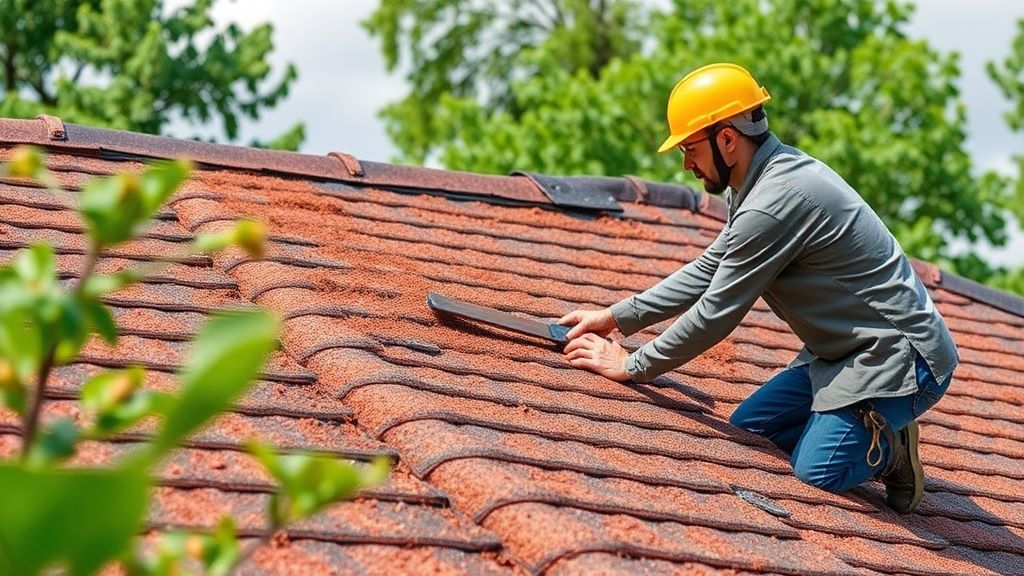
As a homeowner, keeping your roof in top condition is crucial for protecting your investment. Regular inspections can help you catch small issues before they become major problems. While some aspects of roof maintenance can be handled on your own, there are times when it’s essential to call in a professional. Let’s explore the ins and outs of DIY roof inspections and learn when it’s time to seek expert help.
Importance of regular roof inspections
Your roof is your home’s first line of defense against the elements. Regular inspections can help you identify potential issues early, saving you money and headaches in the long run. As highlighted in our article on the impact of proper roofing, a well-maintained roof not only protects your home but can also increase its value.
Ideally, you should inspect your roof at least twice a year, typically in the spring and fall. These inspections can help you prepare for the harsh weather conditions of summer and winter. Additionally, it’s wise to check your roof after severe weather events, such as heavy storms or high winds.
Safety first: Preparing for a DIY roof inspection
Before you begin your DIY roof inspection, safety should be your top priority. Make sure you have a sturdy ladder and someone to spot you. Wear non-slip shoes and consider using a safety harness if you’ll be walking on the roof. Remember, if you’re not comfortable with heights or have a particularly steep roof, it’s better to call a professional.
What to look for during your DIY roof inspection
During your inspection, there are several key areas to focus on. Start by checking for obvious signs of damage or wear. Look for missing, cracked, or curling shingles. These can be indicators that your roof may need repair or replacement. Our guide on knowing when it’s time to replace your roof provides more detailed information on what to look out for.
Next, inspect the flashing around chimneys, vents, and other roof penetrations. Damaged or loose flashing can lead to leaks. If you have a chimney, pay special attention to its condition. Our article on 7 signs your chimney needs repair can help you identify potential issues.
Check your gutters and downspouts for debris and proper drainage. Clogged gutters can lead to water backup and potential roof damage. While you’re at it, look for any granules from asphalt shingles in the gutters, as this can indicate advanced wear.
Interior signs of roof problems
Don’t forget to inspect your attic and the ceilings of your home’s upper floors. Look for signs of water stains, mold, or daylight coming through the roof boards. These can be indicators of leaks or other roofing issues that may not be visible from the outside.
When to call a professional
While DIY inspections are valuable, there are certain situations where it’s best to call in a professional roofing contractor. If you notice any of the following issues, it’s time to seek expert help:
- Multiple missing or damaged shingles
- Sagging areas on your roof
- Significant granule loss from asphalt shingles
- Signs of water damage or leaks inside your home
- Visible daylight through the roof boards in your attic
- Excessive mold or mildew growth on your roof
Additionally, if your roof is nearing the end of its expected lifespan, it’s wise to have a professional inspection. Different roofing materials have different lifespans, and a professional can give you a more accurate assessment of your roof’s condition.
Choosing the right roofing professional
When it’s time to call in a professional, choosing the right contractor is crucial. Our guide on selecting the right roofing contractor provides valuable tips on what to look for. Make sure to choose a licensed and insured contractor with a good reputation in your community.
Understanding your roof’s anatomy
To be more effective in your DIY inspections, it’s helpful to understand the different components of your roof. Our Roofing 101 guide provides a comprehensive overview of roofing anatomy. This knowledge can help you communicate more effectively with professionals when you do need to call them in.
The role of roofing materials in maintenance
Different roofing materials require different maintenance approaches. For instance, asphalt shingles, which are common in many homes, have specific care requirements. Our article on asphalt shingles roofing provides detailed information on this popular roofing material.
If you have a metal roof, your maintenance needs may be different. Metal roofs are known for their durability and longevity, but they still require regular inspections. Check out our metal roofing facts article for more information on caring for metal roofs.
Seasonal considerations for roof inspections
The best time for roof inspections can vary depending on your region and climate. In areas with harsh winters, it’s crucial to inspect your roof in the fall to ensure it’s ready for the coming snow and ice. Similarly, in regions prone to hurricanes or severe storms, spring inspections are vital to prepare for the storm season.
Our guide on choosing the best roof for your region provides insights into how different climates can affect your roofing needs and maintenance schedule.
Sustainable roofing and maintenance
As more homeowners turn to eco-friendly options, it’s worth considering how sustainability factors into roof maintenance. Many sustainable roofing materials, such as those discussed in our article on sustainable roofing, may have different maintenance requirements. Understanding these can help you keep your eco-friendly roof in top condition.
The impact of proper maintenance on roofing warranties
Regular maintenance isn’t just about preventing problems; it’s also about maintaining your roofing warranty. Many warranties require regular maintenance and inspections to remain valid. Our article on understanding roofing warranties provides valuable information on how proper care can protect your warranty coverage.
Innovative tools for roof inspections
Technology is changing the way we approach roof inspections. Some professional roofing companies now use drones or infrared cameras to detect issues that might not be visible to the naked eye. While these tools are typically used by professionals, understanding their capabilities can help you appreciate the value of professional inspections.
DIY repairs: Know your limits
While some minor repairs can be handled by DIY enthusiasts, it’s crucial to know your limits. Attempting complex repairs without proper knowledge and equipment can lead to further damage and potentially void your warranty. When in doubt, it’s always better to consult with a professional.
The future of roofing and maintenance
As roofing technology advances, so do maintenance techniques. Some of the home roofing trends for 2024 include smart roofing systems that can alert homeowners to potential issues. While these systems don’t replace the need for regular inspections, they can provide an additional layer of protection for your home.
Balancing DIY and professional care
Regular DIY roof inspections are an important part of home maintenance, but they should be balanced with professional care. By staying vigilant and knowing when to call in the experts, you can ensure that your roof continues to protect your home for years to come.
Remember, your roof is a significant investment in your home’s protection and value. Taking the time to inspect it regularly and address issues promptly can save you money and stress in the long run. Whether you’re handling inspections yourself or calling in professionals, the key is to stay proactive in your roof’s care and maintenance.



